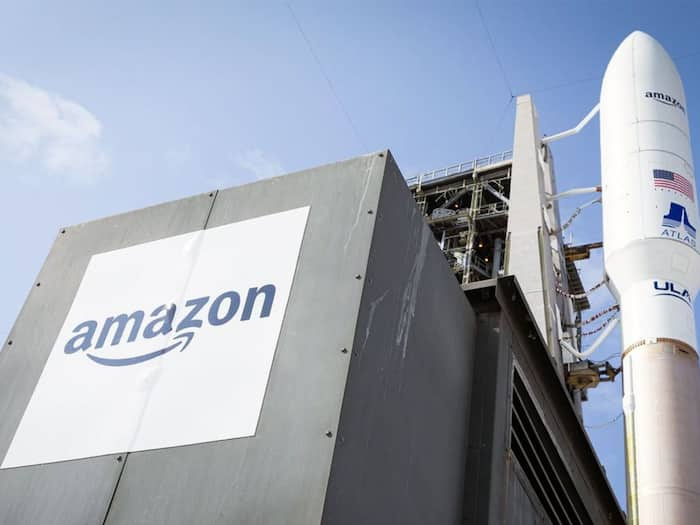
Written By Deepti Ratnam
Published By: Deepti Ratnam | Published: Jun 30, 2025, 03:03 PM (IST)

Starlink and Amazon Project Kuiper have signed their first Indian business deals with Indian VSAT (Very Small Aperture Terminal) service providers in a move indicating a non-Tesla aggressive drive into the Indian satellite communications sector. This is ahead of even the Indian government officially opening up satellite spectrum, a factor that leads us to the trait that these global giants are keen to stamp their presence early in a possible high-growth market.
Both the companies are starting their Indian experience by focusing on the enterprise (B2B) and government (B2G) client base. These divisions will give a more direct route to revenues until consumer retail pricing and distribution strategies are ironed out. Sources quoted by Moneycontrol said that this dual tactic is aimed at maximizing their bandwidth potential and forming alliance in the canvassing of further growth.
“Both Starlink and Amazon have been working to form partnerships in India. They are already scouting VSAT partners and have secured a few in India, focusing on the B2B and B2G spaces. They want their India capacity to be optimally utilized,” a source told Moneycontrol.
🇮🇳 INDIA: @Starlink and Amazon's Kuiper signs first satellite broadband deals in India ahead of spectrum allocation
These partnerships marks a key step toward launching enterprise and government satellite broadband services, even before satellite spectrum is officially… pic.twitter.com/MNCSnsoDtb
— Brian Basson (@BassonBrain) June 30, 2025
As Eutelsat OneWeb takes up a partner-first approach, Starlink and Kuiper are said to have a hybrid go-to-market approach. This comes in the form of direct-to-customer service as well as collaboration with local players. Interestingly, Starlink already partnered with the Indian telecom giants Reliance Jio and Airtel, which is the foundation of a sell-through model.
“Starlink and Kuiper are going for a hybrid go-to-market model in India… Starlink, for instance, has already announced a partnership with Reliance Jio and Airtel, which is the sell-through model,” said a source familiar with the matter.
Direct-to-consumer connections through Starlink’s website are also expected soon. Amazon Kuiper is anticipated to follow a similar path without relying solely on a single distributor.
“Kuiper is also going to be the same and will not rely on a single master distributor, nor are they going to do it all themselves. India is a beginner market with so much diversity, hence this approach,” the person added.
In India, Hughes Communications, Nelco and Inmarsat are among the VSAT providers that are important in providing interconnections of banks, ATMs, fuel stations, warehouses, rural telecom backhauls and defence establishments. Since bandwidth needs increase, notably in applications, such as AI-based monitoring, retail automation, and distant action, migration to LEO (low-Earth orbit) satellite systems is proving vital.
“Companies and government departments run with less connectivity, but they want retail automation, remote monitoring, and AI operations. Defence is also a huge potential user with higher bandwidth, which can be enabled only by LEO satellite-based broadband connectivity,” the source noted.
Shivaji Chatterjee, MD of Hughes Communications India, confirmed that discussions are underway with all major LEO operators.
“As a key incumbent, we will definitely be one of their main go-to-market partners for the B2B and B2G segments,” he told Moneycontrol.
Starlink is the third company to be granted the Government of India license (the GMPCS license) to launch commercial satellite communication in India, others being Eutelsat OneWeb and Jio Satellite. Nonetheless, it does not have yet the final approval of IN-SPACe (Indian space regulator agency). A government official claimed that the draft agreement has been posted and will most probably be signed soon.
“They will soon be approved. It is a matter of time now,” the official said on condition of anonymity.
Additionally, the Department of Telecommunications (DoT) is expected to provide trial spectrum access to Starlink for security demonstrations—a prerequisite for full commercial rollout.Amazon Kuiper Still Awaiting Green Light
Although Amazon Kuiper is still not personally approved to have its GMPCS or IN-SPACe approvals, all the required security measures are claimed to have been completed. Its implementation will now be taken to an impending inter-ministerial standing committee meeting where it is anticipated that they will go through it to clear it completely.
Simultaneously, the Indian government is formulating the last regulations and pricing schemes on allocation of satellite spectrum, after the suggestions of the Telecom Regulatory Authority of India (TRAI). This will be very crucial in determining how these satellite services will regulate, and monetize in the long term.
In the meantime, the experience of the last few years involving the Indian government interacting with the global IT giants has enhanced belief in this industry. Only a few days back, India Communications Minister Jyotiraditya Scindia held talks with senior SpaceX staff and discussed the prospects of cooperation to develop digital infrastructure through satellite technology.